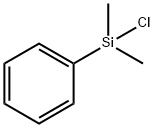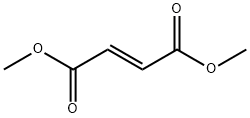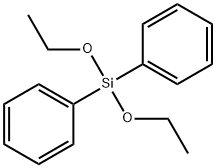Diethoxydimethylsilane
Synonym(s):Dimethyldiethoxysilane
- CAS NO.:78-62-6
- Empirical Formula: C6H16O2Si
- Molecular Weight: 148.28
- MDL number: MFCD00009068
- EINECS: 201-127-6
- SAFETY DATA SHEET (SDS)
- Update Date: 2025-09-25 17:15:13

What is Diethoxydimethylsilane?
Chemical properties
Colorless clear liquid
The Uses of Diethoxydimethylsilane
- Diethoxydimethylsilane may be used to modify epoxy resin6 and the surfaces of pure silica and Pd/SiO2 hydrogen gas sensors. Surface modification results in enhanced gas sensing properties of the sensors.
- It may be used as a precursor for the synthesis of ultrafine SiC powder.
- Diethoxydimethylsilane is an intermediate silane useful for blocking hydroxyl and amino groups in organic synthesis reactions. This silylating step allows subsequent reactions to be carried out which would be adversely affected by the presence of active hydrogen in the hydroxyl or amine groups. Following the reaction step, hydroxyl or amine groups blocked with diethoxydimethylsilane may be recovered by a hydrolysis procedure.
- It is also used for preparing hydrophobic and release materials as well as enhancing flow of powders.
- Studies report its use as a precursor for ORMOSIL (Organically modified SILicates) and thin a-SiOxCyHz films.
The Uses of Diethoxydimethylsilane
Diethoxydimethylsilane is useful for blocking hydroxyl and amino groups in organic synthesis reactions. This silylating step allows subsequent reactions to be carried out which would be adversely affected by the presence of active hydrogen in the hydroxyl or amine groups. Following the reaction step, hydroxyl or amine groups blocked with diethoxydimethylsilane may be recovered by a hydrolysis procedure. It is also used for preparing hydrophobic and release materials as well as enhancing flow of powders.
General Description
A colorless liquid. Flash point 75°F. Less dense than water and insoluble in water. Vapors heavier than air.
Air & Water Reactions
Highly flammable. Insoluble in water.
Reactivity Profile
These substances undergo chemical reactions only under relatively severe circumstances or in the presence of an effective catalyst that promotes reaction.. They are resistant to ignition, although they may become flammable at very high temperatures. They will be resistant to oxidation/reduction, except in the most severe conditions. These materials may be nontoxic.
Health Hazard
Inhalation or contact with material may irritate or burn skin and eyes. Fire may produce irritating, corrosive and/or toxic gases. Vapors may cause dizziness or suffocation. Runoff from fire control may cause pollution.
Fire Hazard
HIGHLY FLAMMABLE: Will be easily ignited by heat, sparks or flames. Vapors may form explosive mixtures with air. Vapors may travel to source of ignition and flash back. Most vapors are heavier than air. They will spread along ground and collect in low or confined areas (sewers, basements, tanks). Vapor explosion hazard indoors, outdoors or in sewers. Runoff to sewer may create fire or explosion hazard. Containers may explode when heated. Many liquids are lighter than water.
Flammability and Explosibility
Flammable
Safety Profile
Mildly toxic by inhalation and ingestion. A skin and eye irritant. A dangerous fire hazard when exposed to heat, flame, or oxidizers. When heated to decomposition it emits acrid smoke and irritating fumes.
Potential Exposure
This material is used in waterrepellent formulations.
First aid
If this chemical gets into the eyes, remove anycontact lenses at once and irrigate immediately for at least15 min, occasionally lifting upper and lower lids. Seek medical attention immediately. If this chemical contacts theskin, remove contaminated clothing and wash immediatelywith soap and water. Seek medical attention immediately. Ifthis chemical has been inhaled, remove from exposure,begin rescue breathing (using universal precautions, including resuscitation mask) if breathing has stopped and CPR ifheart action has stopped. Transfer promptly to a medicalfacility. When this chemical has been swallowed, get medical attention. Give large quantities of water and inducevomiting. Do not make an unconscious person vomit.
Storage
Color Code—Red: Flammability Hazard: Store ina flammable liquid storage area or approved cabinet awayfrom ignition sources and corrosive and reactive materials.Prior to working with this chemical you should be trainedon its proper handling and storage. Store in tightly closedcontainers in a cool, well-ventilated area away from heat.Sources of ignition, such as smoking and open flames, areprohibited where dimethyldiethoxysilane is handled, used,or stored. Metal containers involving the transfer of 5 gallons or more of dimethyldiethoxysilane should be groundedand bonded. Drums must be equipped with well-closingvalves, pressure vacuum bungs, and flame arresters. Useonly nonsparking tools and equipment, especially whenopening and closing containers of dimethyldiethoxysilane.
Shipping
Evacuate and restrict persons not wearingprotective equipment from area of spill or leak until cleanupis complete. Remove all ignition sources. Ventilate area ofspill or leak. Absorb liquids in vermiculite, dry sand, earth,peat, carbon, or a similar material and deposit in sealed containers. Keep this chemical out of a confined space, such asa sewer, because of the possibility of an explosion, unlessthe sewer is designed to prevent the buildup of explosiveconcentrations. It may be necessary to contain and disposeof this chemical as a hazardous waste. If material or contaminated runoff enters waterways, notify downstream usersof potentially contaminated waters. Contact your local orfederal environmental protection agency for specific recommendations. If employees are required to clean up spills,they must be properly trained and equipped. OSHA1910.120(q) may be applicable.
Incompatibilities
Forms explosive mixture with air. Keepaway from strong oxidizers.
Properties of Diethoxydimethylsilane
| Melting point: | -97°C |
| Boiling point: | 114 °C (lit.) |
| Density | 0.865 g/mL at 25 °C (lit.) |
| vapor pressure | 7-7910Pa at 20-25℃ |
| refractive index | n |
| Flash point: | 53 °F |
| storage temp. | Flammables area |
| form | liquid |
| color | ≤25(APHA) |
| Specific Gravity | 0.939 |
| Water Solubility | may decompose |
| Sensitive | Moisture Sensitive |
| Hydrolytic Sensitivity | 7: reacts slowly with moisture/water |
| BRN | 1736110 |
| Dielectric constant | 3.2200000000000002 |
| CAS DataBase Reference | 78-62-6(CAS DataBase Reference) |
| NIST Chemistry Reference | Silane, diethoxydimethyl-(78-62-6) |
| EPA Substance Registry System | Silane, diethoxydimethyl- (78-62-6) |
Safety information for Diethoxydimethylsilane
| Signal word | Danger |
| Pictogram(s) |
 Flame Flammables GHS02  Exclamation Mark Irritant GHS07 |
| GHS Hazard Statements |
H225:Flammable liquids H315:Skin corrosion/irritation H319:Serious eye damage/eye irritation H332:Acute toxicity,inhalation |
| Precautionary Statement Codes |
P210:Keep away from heat/sparks/open flames/hot surfaces. — No smoking. P302+P352:IF ON SKIN: wash with plenty of soap and water. P305+P351+P338:IF IN EYES: Rinse cautiously with water for several minutes. Remove contact lenses, if present and easy to do. Continuerinsing. |
Computed Descriptors for Diethoxydimethylsilane
New Products
Indole Methyl Resin tert-butyl 9-methoxy-3-azaspiro[5.5]undecane-3-carboxylate Boc-His(Boc)-OH 2-CTC Resin 4-Chloro-7-tosy1-7Hpyrrolo[2,3-d]pyrimidine 5,7-Dibromo-1H-indole 2,5-dichloro-N-hydroxy-4,6-dimethylpyridine-3-carboximidamide 2,2-Dimethoxy-7-azaspiro[3.5]nonane hydrochloride 4-chloromethyl-5-methyl-1,3-dioxol-2-one (DMDO-Cl) R-2-BENZYLOXY PROPIONIC ACID 1,1’-CARBONYLDIIMIDAZOLE 1,1’-CARBONYLDI (1,2-4 TRIAZOLE) N-METHYL INDAZOLE-3-CARBOXYLIC ACID 4-((2-hydroxyethyl)thio)benzoic acid 1-(TERT-BUTOXYCARBONYL)-2-PYRROLIDINONE Methyl 6-methylnicotinate 3-Pyridineacrylic acid tert-Butyl carbazate TETRAHYDRO-2H-PYRAN-3-OL 2-((4-morpholinophenylamino) (methylthio) methylene) malononitrile 3-(4-morpholinophenylamino)-5-amino-1H-pyrazole-4-carbonitrile 2,4-dihydroxybenzaldehyde 1,3-Diethyl-1,3-Diphenylurea Methyl 2-methylquinoline-6-carboxylateRelated products of tetrahydrofuran








You may like
-
 Diethoxydimethylsilane CAS 78-62-6View Details
Diethoxydimethylsilane CAS 78-62-6View Details
78-62-6 -
 Diethoxydimethylsilane CAS 78-62-6View Details
Diethoxydimethylsilane CAS 78-62-6View Details
78-62-6 -
 Diethoxydimethylsilane CAS 78-62-6View Details
Diethoxydimethylsilane CAS 78-62-6View Details
78-62-6 -
 Diethoxydimethylsilane CAS 78-62-6View Details
Diethoxydimethylsilane CAS 78-62-6View Details
78-62-6 -
 Pyridine 99.5% HPLC /UV SpectroscopyView Details
Pyridine 99.5% HPLC /UV SpectroscopyView Details
110-86-1 -
 Dibutyl PhthalateView Details
Dibutyl PhthalateView Details
84-74-2 -
 Imidazole Spot supply, competitive priceView Details
Imidazole Spot supply, competitive priceView Details
288-32-4 -
 Thiourea 99% ARView Details
Thiourea 99% ARView Details
62-56-6
